Bodyweight exercises are essential for wrestling training, offering benefits such as improved strength, agility, and endurance. These exercises, which use the body’s weight for resistance, are crucial for developing the functional strength required for successful wrestling performance. From bodyweight squats to dynamic movements like burpees, these exercises form the foundation of comprehensive training programs designed to enhance a wrestler’s physical abilities.
What is Wrestling?
Wrestling is a martial art and combat sport that involves grappling with an opponent and striving to obtain a position of advantage through different throws, holds, and takedowns. It is one of the oldest sports in human history, with various styles and rules governing its practice. From amateur wrestling conducted on a mat to professional wrestling, which combines athletic theater with mock combat and drama, this sport offers a physically demanding yet non-violent form of competition.
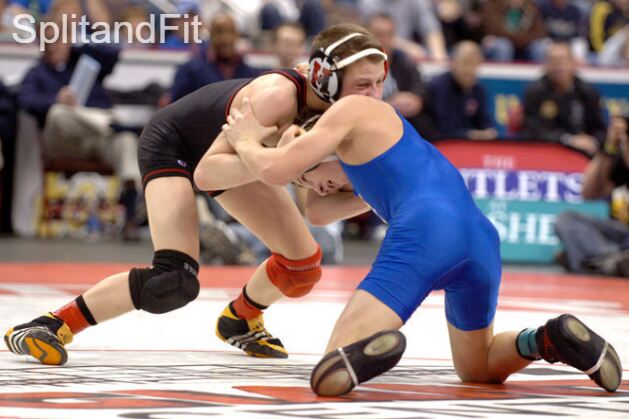
Wrestling Workouts Without Weights: Why It Matters
Wrestling workouts without weights are crucial for wrestlers because they focus on functional strength, agility, and endurance, all of which are essential for success in the sport. These workouts emphasize bodyweight exercises and dynamic movements that directly translate to the demands of wrestling, allowing athletes to develop the specific physical attributes required to excel on the mat.
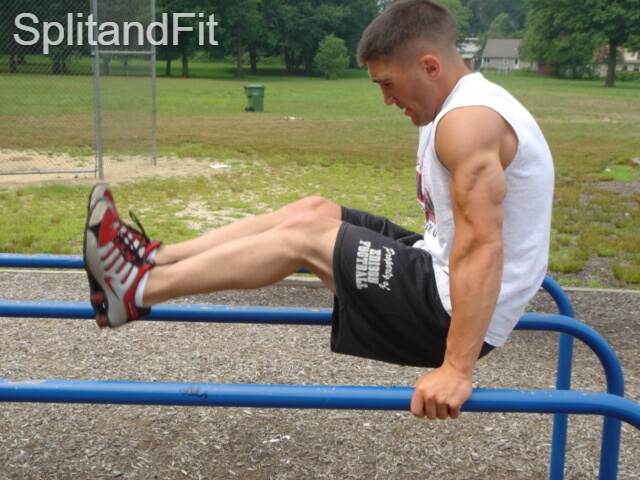
Top Bodyweight Exercises For Wrestling
Here are the top 12 bodyweight exercises for wrestling:
- Push-Ups: A classic upper-body strength builder targeting the chest, shoulders, and triceps.
- Pull-Ups: Great for strengthening the back, shoulders, and arms, essential for grappling and pulling movements in wrestling.
- Handstand Push-Ups: Develop shoulder and triceps strength, critical for maintaining stability and balance in various wrestling positions.
- Pistol Squats: Enhance leg strength and stability, mimicking the single-leg movements often seen in wrestling stances and takedowns.
- Dips: Focus on triceps and chest strength, offering additional upper-body conditioning for wrestling.
- Nordic Hamstring Curls: Strengthen the hamstrings, crucial for explosive movements and injury prevention in wrestling.
- Rope Climbing (No Legs): Builds upper body and grip strength, simulating the demands of controlling opponents in wrestling.
- Squats / Squat Jumps: Improve lower body power and explosiveness, vital for takedowns and movement on the mat.
- Lunges / Lunge Jumps: Enhance leg strength, stability, and agility, supporting various wrestling maneuvers.
- Ring Push-Ups: Provide a challenging variation of push-ups, engaging stabilizing muscles and core strength.
- Barbell Roll Outs: Strengthen the core and improve abdominal stability, essential for maintaining posture and control during matches.
- Burpees: A full-body exercise that improves conditioning, explosiveness, and agility, all vital for wrestling performance.
1. Push-Ups
Push-ups are a fundamental bodyweight exercise that targets the chest, shoulders, triceps, and core muscles.
How to Perform:
- Start in a plank position with your hands shoulder-width apart and palms flat on the ground.
- Keep your body straight from head to heels, engaging your core muscles.
- Lower your body by bending your elbows until your chest nearly touches the ground.
- Keep your elbows close to your body and avoid letting your lower back sag.
- Push through your palms to straighten your arms and return to the starting position.
- Repeat for the desired number of repetitions, maintaining proper form throughout.
2. Pull-Ups
Pull-ups are a challenging bodyweight exercise primarily targeting the back, biceps, and forearm muscles.
How to Perform:
- Begin by gripping an overhead bar with your hands slightly wider than shoulder-width apart and palms facing away from you.
- Hang from the bar with your arms fully extended and feet off the ground.
- Engage your core muscles and pull your body upward by bending your elbows and squeezing your shoulder blades together.
- Continue pulling until your chin clears the bar, maintaining a smooth and controlled motion.
- Lower yourself back down with control until your arms are fully extended again.
- Repeat for the desired number of repetitions, focusing on maintaining proper form throughout the exercise.
3. Handstand Push-Ups
Handstand push-ups are an advanced bodyweight exercise that targets the shoulders, triceps, and upper back while also engaging the core muscles for stability.
How To Perform:
- Begin by placing your hands on the ground shoulder-width apart, fingers spread wide, and arms straight.
- Kick your feet up against a wall or use a partner to assist you in getting into a handstand position with your body forming a straight line from wrists to heels.
- Engage your core muscles to maintain balance and stability in the handstand position.
- Lower yourself down by bending your elbows, allowing your head to descend toward the ground between your hands.
- Keep your elbows close to your body and maintain control throughout the descent.
- Once your head lightly touches the ground or your arms reach a 90-degree angle, push through your palms to straighten your arms and return to the starting position.
- Ensure that your body remains in a straight line throughout the movement, avoiding any arching or bending at the hips.
- Repeat for the desired number of repetitions, focusing on maintaining proper form and control. Beginners may start with wall-supported handstand push-ups or use resistance bands for assistance until they build sufficient strength and balance.
4. Pistol Squats
Pistol squats, also known as single-leg squats, are an advanced bodyweight exercise that targets the quadriceps, glutes, hamstrings, and core muscles.
How To Perform:
- Begin by standing on one leg with the other leg extended straight out in front of you.
- Keep your chest up, shoulders back, and core engaged for stability.
- Lower your body down by bending the knee of the supporting leg, and pushing your hips back as if sitting in a chair.
- As you descend, extend your arms forward for balance and keep your non-supporting leg elevated off the ground.
- Aim to lower your body until your thigh is parallel to the ground or as far down as your mobility allows, maintaining control throughout the movement.
- Push through the heel of the supporting foot to drive yourself back up to the starting position.
- Keep your knee tracking over your toes and maintain proper alignment throughout the exercise.
- Repeat for the desired number of repetitions on one leg before switching to the other leg.
- Beginners may use a support such as a chair or bench for assistance or perform partial range-of-motion pistol squats until they develop sufficient strength and balance.
5. Dips
Dips are a bodyweight exercise that primarily targets the triceps, chest, and shoulders while also engaging the muscles of the core and upper back.
How To Perform:
- Start by gripping parallel bars with your hands shoulder-width apart and palms facing inward.
- Lift yourself so that your arms are fully extended, and your feet are off the ground, either crossed behind you or straight down.
- Lower your body by bending your elbows until your upper arms are parallel to the ground or at a comfortable depth.
- Keep your chest up, shoulders back, and elbows pointed slightly backward to engage the triceps and chest muscles effectively.
- Avoid allowing your shoulders to shrug or your elbows to flare out to the sides.
- Push through your palms to straighten your arms and return to the starting position, fully extending your elbows.
- Control your movements and avoid swinging or using momentum to complete the exercise.
- Repeat for the desired number of repetitions, maintaining proper form throughout.
- Beginners may use a dip machine or assistive bands to support some of their body weight until they develop sufficient strength to perform full bodyweight dips.
6. Nordic Hamstring Curls
Nordic hamstring curls are a challenging bodyweight exercise that targets the hamstrings, glutes, and lower back while also engaging the core muscles for stability.
How To Perform:
- Begin by kneeling on a soft surface with your feet secured under a sturdy object or partner to anchor them in place.
- Engage your core muscles to maintain a straight line from your knees to your head.
- Slowly lower your torso forward while keeping your back straight, allowing your body to hinge at the hips.
- Control the descent as you lower your torso toward the ground, bending at the knees.
- Continue lowering your body until you feel a stretch in your hamstrings or until your torso is parallel to the ground.
- Once you reach the lowest point, push through your heels and engage your hamstrings to pull your torso back up to the starting position.
- Keep your movements smooth and controlled throughout the exercise, avoiding any jerky or rapid motions.
- Focus on using your hamstrings to lift your body back up, rather than relying on momentum or assistance from other muscle groups.
- Repeat for the desired number of repetitions, maintaining proper form and control throughout.
- Beginners may start with partial range-of-motion Nordic hamstring curls or use a partner to assist with the movement until they develop sufficient strength and control to perform the exercise independently.
7. Rope Climbing (No Legs)
Rope climbing without using the legs is an advanced bodyweight exercise that primarily targets the upper body, including the arms, shoulders, back, and grip strength.
How To Perform:
- Begin by gripping the rope with both hands, ensuring a firm and secure hold.
- Lift your body off the ground using only your arms, keeping your legs straight and feet off the ground.
- Engage your core muscles to maintain stability and control throughout the movement.
- Pull yourself upward by alternately pulling each hand up the rope, using a hand-over-hand motion.
- Keep your movements smooth and controlled, avoiding jerking or swinging motions.
- Aim to climb as high as possible by continuing to pull yourself up the rope until your reach your desired height or the top of the rope.
- Once you reach your target height, carefully lower yourself back down using the same hand-over-hand motion, maintaining control throughout.
- Focus on using your upper body strength to propel yourself up the rope, rather than relying on momentum or assistance from the legs.
- Repeat for the desired number of repetitions or climb to a specific height, ensuring proper form and technique are maintained throughout.
- Beginners may start with assisted rope climbs using the legs for support until they develop sufficient upper body strength and grip strength to perform the exercise without using the legs.
8. Squats / Squat Jumps
Squats and squat jumps are dynamic bodyweight exercises that target the quadriceps, hamstrings, glutes, and core muscles.
How To Perform:
- Begin by standing with your feet shoulder-width apart, toes pointed slightly outward.
- Engage your core muscles and keep your chest up, shoulders back, and spine neutral throughout the movement.
- For squats: Lower your body by bending your knees and hips, as if you’re sitting back into a chair. Aim to lower your hips until your thighs are parallel to the ground, or as far down as your mobility allows. For squat jumps: Perform the same motion as squats, but explosively push through your heels to jump vertically into the air as high as possible.
- Keep your knees tracking over your toes, and avoid allowing them to collapse inward.
- Land softly on the balls of your feet for squat jumps, absorbing the impact by bending your knees and hips.
- For squats: Push through your heels to straighten your legs and return to the starting position. For squat jumps: As soon as you land, immediately lower back down into a squat position to prepare for the next jump.
- Repeat for the desired number of repetitions, maintaining proper form and control throughout.
- Squat jumps can be performed for explosive power and plyometric training, while regular squats focus on strength and endurance.
- Beginners may start with bodyweight squats and gradually progress to squat jumps as they build strength and confidence.
9. Lunges / Lunge Jumps
Lunges and lunge jumps are dynamic bodyweight exercises that target the quadriceps, hamstrings, glutes, and calves while also engaging the core muscles for stability.
How to Perform:
- Begin by standing tall with your feet hip-width apart and your hands on your hips or by your sides.
- For lunges: Take a big step forward with one foot, keeping your chest up and shoulders back. For lunge jumps: Perform the same motion as lunges, but with a more explosive movement.
- Lower your body by bending both knees until your front thigh is parallel to the ground, or as far down as your mobility allows.
- Ensure your front knee is directly above your ankle and your back knee is pointing toward the ground.
- For lunges: Push through your front heel to straighten your front leg and return to the starting position. For lunge jumps: Explode upward from the lunge position, switching legs mid-air and landing softly in a lunge position with the opposite leg forward.
- Maintain a controlled descent and explosive upward movement for lunge jumps.
- Repeat for the desired number of repetitions or alternate legs for each repetition.
- Lunges can be performed as a static exercise for strength and endurance, while lunge jumps add a plyometric element for explosive power.
- Beginners may start with stationary lunges and gradually progress to lunge jumps as they build strength and confidence. Proper form and control are essential for both variations of the exercise.
10. Ring Push-Ups
Ring push-ups are a challenging variation of the traditional push-up, performed using gymnastic rings to enhance instability and engage additional stabilizer muscles.
How To Perform:
- Begin by setting up gymnastic rings at an appropriate height, ensuring they are stable and secure.
- Grip the rings with your palms facing down, slightly wider than shoulder-width apart.
- Extend your legs behind you and position your body in a plank position, with your arms fully extended and wrists aligned with your shoulders.
- Engage your core muscles to maintain stability and prevent your hips from sagging or rising.
- Lower your body by bending your elbows, keeping them close to your sides, until your chest nearly touches the rings.
- Maintain control and stability throughout the movement, avoiding any swinging or excessive movement of the rings.
- Push through your palms to straighten your arms and return to the starting position, fully extending your elbows.
- Keep your body in a straight line from head to heels throughout the exercise, focusing on maintaining proper form and stability.
- Repeat for the desired number of repetitions, ensuring each repetition is performed with control and proper technique.
- Ring push-ups provide an additional challenge to traditional push-ups by requiring increased stabilization and muscle engagement, making them an excellent exercise for building upper body strength and stability.
11. Barbell Roll Outs
Barbell roll outs are a challenging core exercise that targets the abdominals, obliques, and stabilizer muscles while also engaging the shoulders and lower back.
How To Perform:
- Begin by kneeling on the ground with a barbell loaded with weight plates positioned in front of you.
- Grip the barbell with an overhand grip, hands slightly wider than shoulder-width apart.
- Brace your core muscles to maintain stability and keep your spine neutral throughout the movement.
- Roll the barbell forward by extending your arms and pushing it away from your body, keeping your hips and shoulders aligned.
- Lower your torso toward the ground, aiming to maintain a straight line from your head to your knees.
- Continue rolling the barbell forward until your arms are fully extended or until you feel a stretch in your abdominals.
- Avoid allowing your lower back to arch excessively or your hips to sag toward the ground.
- Engage your core muscles to pull the barbell back toward your body, returning to the starting position with control.
- Repeat for the desired number of repetitions, focusing on maintaining proper form and control throughout.
- Barbell roll outs can be modified by adjusting the distance you roll the barbell forward or by using lighter weight plates to decrease the difficulty level. They are an effective exercise for strengthening the core muscles and improving overall stability and control.
12. Burpees
Burpees are a high-intensity full-body exercise that combines elements of strength training and cardiovascular conditioning.
How To Perform:
- Start in a standing position with your feet shoulder-width apart and your arms by your sides.
- Lower yourself into a squat position by bending your knees and placing your hands on the ground in front of you.
- Kick your feet back to assume a plank position, keeping your arms extended and your body in a straight line from head to heels.
- Perform a push-up by lowering your chest to the ground while keeping your elbows close to your body.
- Push through your palms to return to the plank position.
- Jump your feet forward toward your hands, landing softly in the squat position.
- Explosively jump upward, extending your arms overhead.
- Land softly on the balls of your feet and immediately lower back down into the squat position to begin the next repetition.
- Maintain a brisk pace, moving through each phase of the exercise with control and fluidity.
- Burpees can be modified to suit different fitness levels by adjusting the speed, eliminating the push-up, or reducing the height of the jump.
- Repeat for the desired number of repetitions or incorporate burpees into a high-intensity interval training (HIIT) workout for maximum cardiovascular and calorie-burning benefits.
Frequent Question Answers
| Questions | Answers |
|---|---|
| Do wrestlers do bodyweight exercises? | Yes, many wrestlers incorporate bodyweight exercises into their training routines to develop strength, power, and agility. |
| Is calisthenics good for wrestling? | Calisthenics, which focuses on bodyweight exercises, can be highly beneficial for wrestling as it helps build functional strength, endurance, and flexibility. |
| What exercises are good for wrestling without equipment? | Bodyweight exercises such as push-ups, pull-ups, pistol squats, burpees, and jump squats are excellent options for wrestling training without equipment. |
| How do you train your body for wrestling? | Training for wrestling involves a combination of bodyweight exercises, grappling drills, agility training, and conditioning to develop the specific physical attributes required for the sport. |
| How can I increase my wrestling speed? | To increase wrestling speed, focus on agility drills, sprinting, plyometric exercises, and footwork drills to improve quickness, explosiveness, and reaction time. |
| How to be a stronger wrestler? | Becoming a stronger wrestler involves a comprehensive training regimen that includes strength training, bodyweight exercises, functional movements, and sport-specific drills. |
| How to train for wrestling at home? | Training for wrestling at home can involve bodyweight exercises, shadow wrestling drills, cardio workouts, and flexibility exercises to maintain and improve physical conditioning. |
| How do wrestlers get abs? | Wrestlers can develop strong abs through a combination of core exercises, full-body workouts, and a balanced diet to reduce body fat and reveal abdominal muscles. |
| How do wrestlers train abs? | Wrestlers train their abs through exercises like planks, Russian twists, bicycle crunches, leg raises, and other core-strengthening movements to enhance stability and power in wrestling. |
Conclusion
In conclusion, bodyweight exercises offer wrestlers a valuable training tool to develop strength, power, agility, and endurance without the need for specialized equipment. Incorporating a variety of bodyweight exercises such as push-ups, pull-ups, pistol squats, and burpees can enhance overall physical conditioning, essential for success on the wrestling mat.
These exercises target key muscle groups involved in wrestling movements, helping to improve performance and reduce the risk of injury. Additionally, bodyweight exercises can be easily adapted to suit individual skill levels and training environments, making them accessible for wrestlers at all levels of experience. By integrating these exercises into a comprehensive training regimen, wrestlers can effectively build the physical attributes necessary to excel in the demanding sport of wrestling.
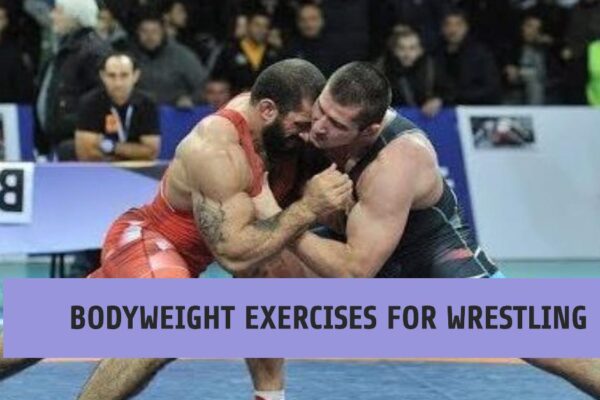


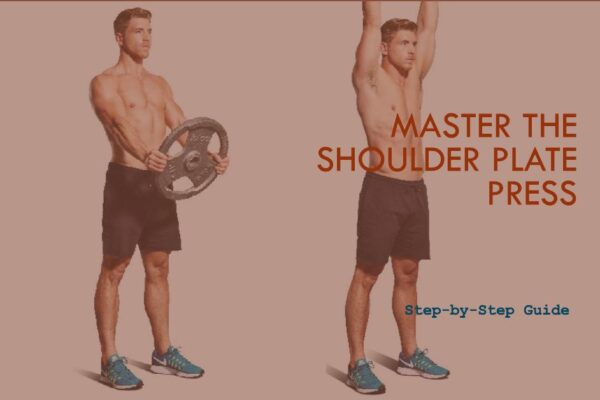
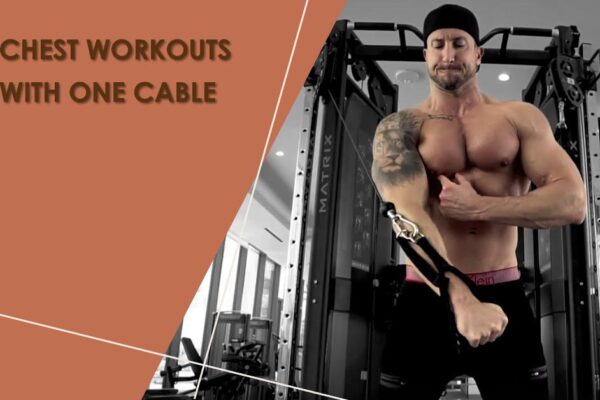
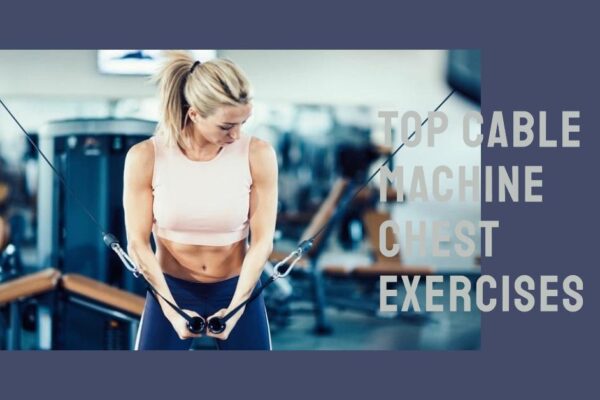
Leave a Reply